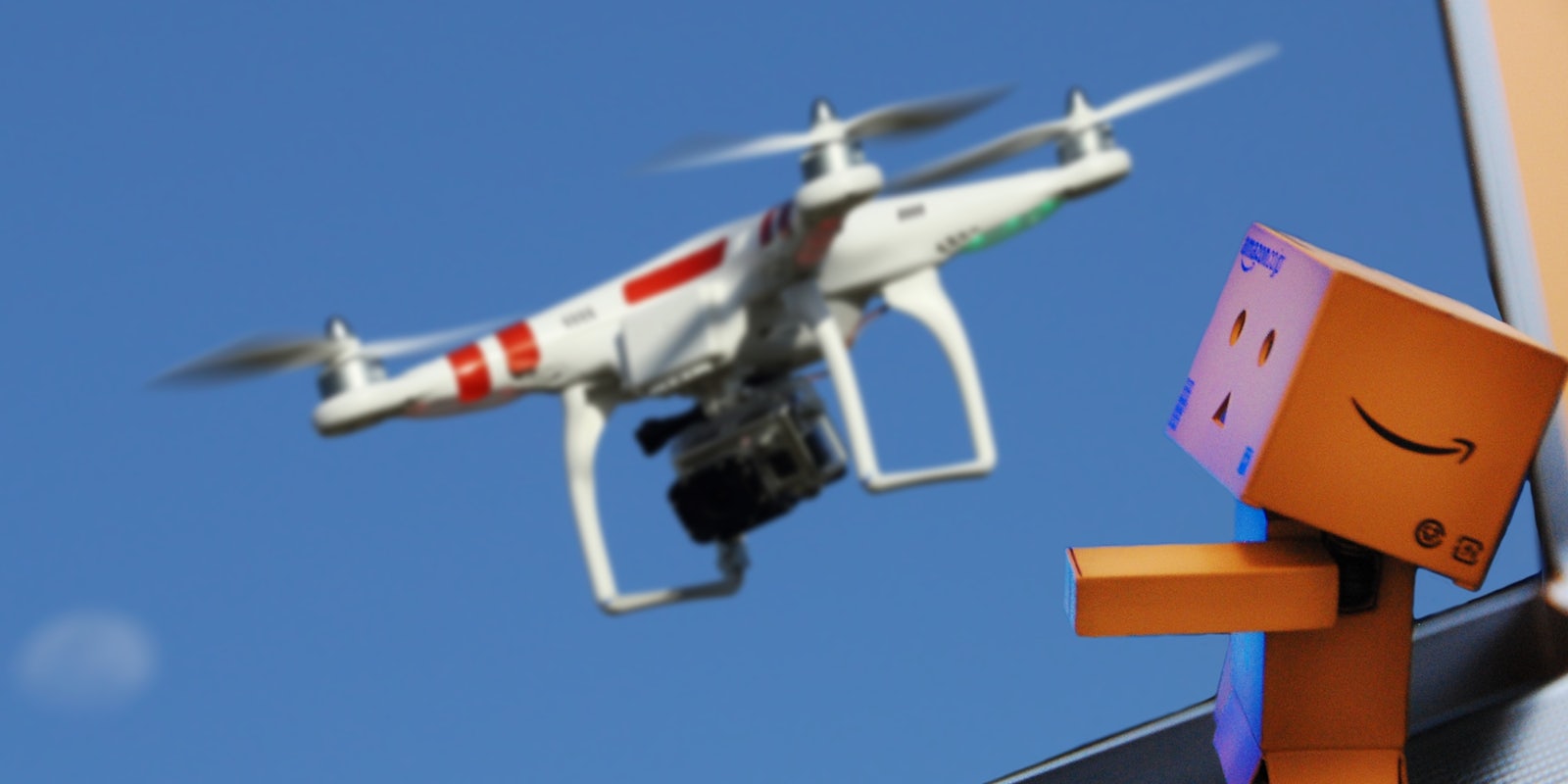I watched with trepidation Amazon’s ridiculously well-marketed release of Amazon Prime Air ahead of Cyber Monday. In the official launch video, a vertical lift drone ascends into a crystal-clear sky, floats over farmland, and lands gently on an upper-middle class stoop, quickly whisking itself away before the owner collects his package.
And that’s all picturesque and pleasing, but the reality is far thicker for Amazon. Much like the Appalachians I drove a rental car through this weekend, the terrain for large swaths of the country is thick with vegetation and climate. Indeed, one of the reasons drones work so well for the military is they are mostly used in areas that have the benefit of a calm climate, like Yemen or Pakistan. Dropping a package into a Seattle suburb would have the effectiveness of a Predator over Hanoi.

The physical limitations don’t end there: There’s also that half-hour delivery time Amazon CEO Jeff Bezos laid down on 60 Minutes. With only a range of 10 miles, the “quadrocopter” drones Amazon seems bent on using could barely get an iPhone 5 to me in Harrisburg from the nearest distribution center in Carlisle, 23 miles away. In fact, that range number is total, meaning Amazon could only deliver in a 5-mile radius, assuming the company wants its expensive drone back. And while Amazon “fulfillment centers” are notoriously rigorous and hard-scheduled, packages still take an hour or so just to be processed and loaded onto a truck.
The model Amazon has been using for distribution is known as “hub-and-spoke” shipping. The Amazon warehouse holding your Malcolm Gladwell book is little concerned with your specific address; packages are shipped from the “hub” of their warehouse to the “spokes” of delivery systems like UPS and FedEx. (It’s markedly close to how ISPs bring you broadband.) Moving to drones would be a massacre of Amazon’s current system, turning delivery into a direct service.
As Wired points out, the average UPS truck can hold 120 packages of varying size and weight; what in the heck would that look like being accomplished by 120 drones? One can imagine Ride of the Valkyries playing in the heads of any onlookers. Even pizza guys take more than one pie with them.
Of course, not all obstacles are physical. The technology for flying cars, for example, has been considered for nearly as long as The Jetsons. To ask why you don’t have one in your driveway is like asking why airports need security in the first place. Air space is heavily regulated by necessity.
Amazon would need to spend more money than it would earn to make monitoring such a service even possible. Buying drones, hiring pilots, address-identification software, storage, legal fees, patent after patent after patent. And these don’t even handle the more direct concerns, like hackers or simply flying a drone into a fifth floor walkup. Amazon is talking about spending tens if not hundreds of millions of dollars to furnish what is essentially a gimmick.
 Amazon does, actually, have a history of losing money on products. The Kindle Fire premiered in 2011 at an asking price of $199, two dollars less than it actually cost to make the tablet. By comparison, the new iPad Air costs $272 to make and sells for nearly double that at $499. Amazon took a loss on the physical tablet to get you into the Amazon services network, known simply as Amazon Prime. Amazon, like Apple and Google, realize wrapping a user into your universe is far more profitable than simply selling them a device.
Amazon does, actually, have a history of losing money on products. The Kindle Fire premiered in 2011 at an asking price of $199, two dollars less than it actually cost to make the tablet. By comparison, the new iPad Air costs $272 to make and sells for nearly double that at $499. Amazon took a loss on the physical tablet to get you into the Amazon services network, known simply as Amazon Prime. Amazon, like Apple and Google, realize wrapping a user into your universe is far more profitable than simply selling them a device.
Amazon is in a special place to take advantage of such a business model. Its Kindle Fire tablets have been selling handsomely at their bargain-bin rate (when compared to other tablets) and require an Amazon account to use, often even coming with built-in ads (Amazon would prefer we call these ‘Special Offers”). So it makes a degree of cynical sense that Bezos would “unveil” a service that is impossible with current legal, technological, and geographical frameworks the day before Cyber Monday, when the all-new Kindle Fire HDX was on sale for a paltry $179.
There can be no doubt we live in an era merging science fiction with reality. You can be a tourist in space! Your car can drive itself! Your heart could run on pee! It’s very tempting to believe a wealthy benefactor when he promises you the world and, because of his status, has to face very few questions. Hyperloop, anyone?
And this isn’t to say delivery-by-drone will never happen. Several companies have displayed how such technology can bring you anything from tacos to vital pharmaceuticals. And it’s also important for dreamers to dream big, lest we find ourselves saddled with a complacent generation of lazy engineers, investors, and programmers.
But it’s vastly important that we, the public, keep our heads from being forced up into the clouds by a technocracy that wants us to forget they are businesses like any other.
Amazon Prime Air isn’t a product unveiling. It’s a marketing gimmick.
Photos by Don McCullough/Flickr and mendhak/Flickr (remix by Fernando Alfonso III)
